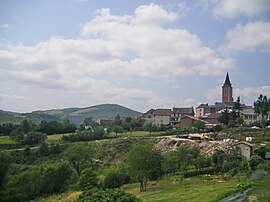Broquiès
Broquiès
Commune in Occitanie, France
Broquiès (French pronunciation: [bʁɔkjɛs]; Occitan: Broquièrs) is a commune in the Aveyron department in southern France.
You can help expand this article with text translated from the corresponding article in French. (December 2008) Click [show] for important translation instructions.
|




